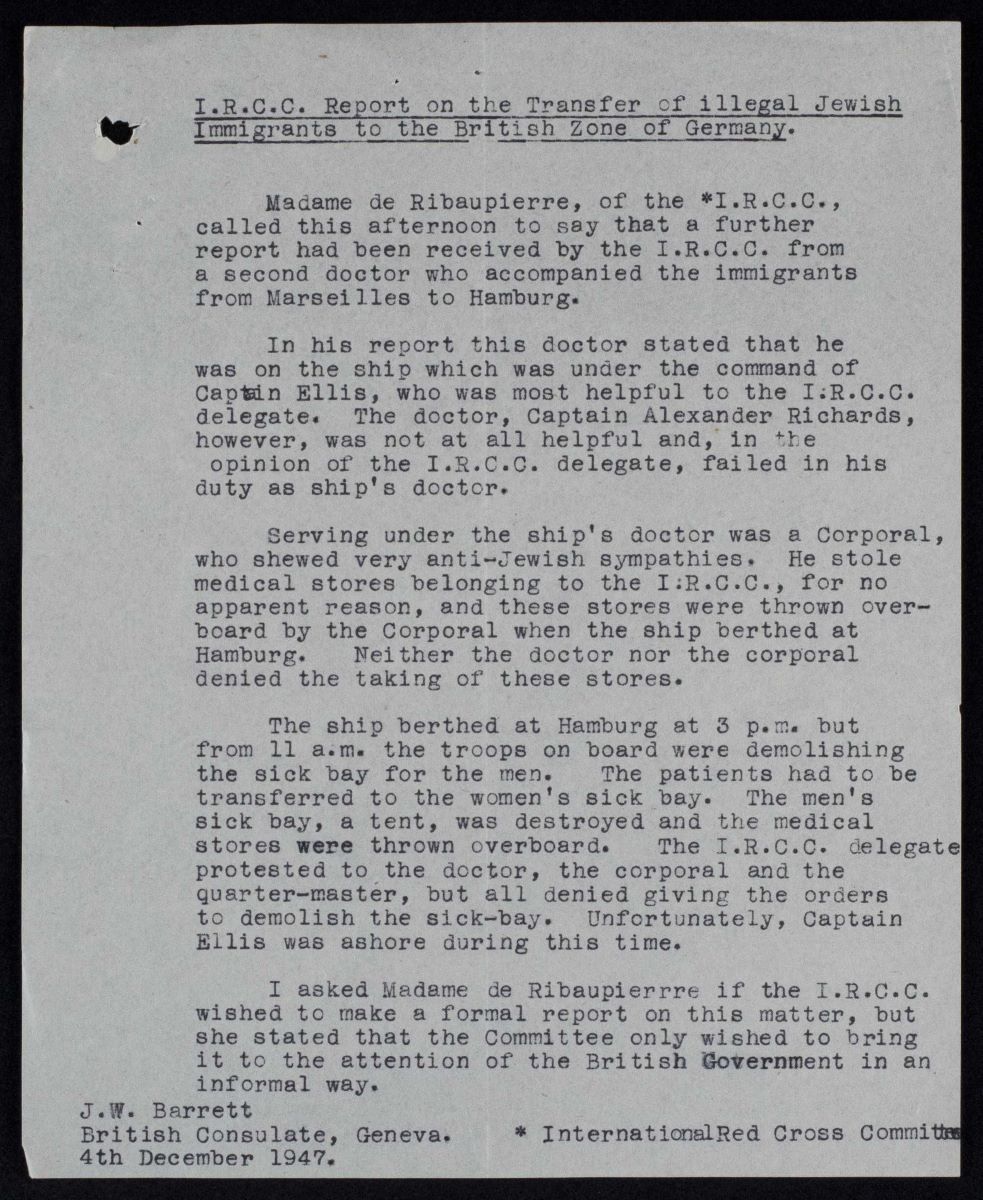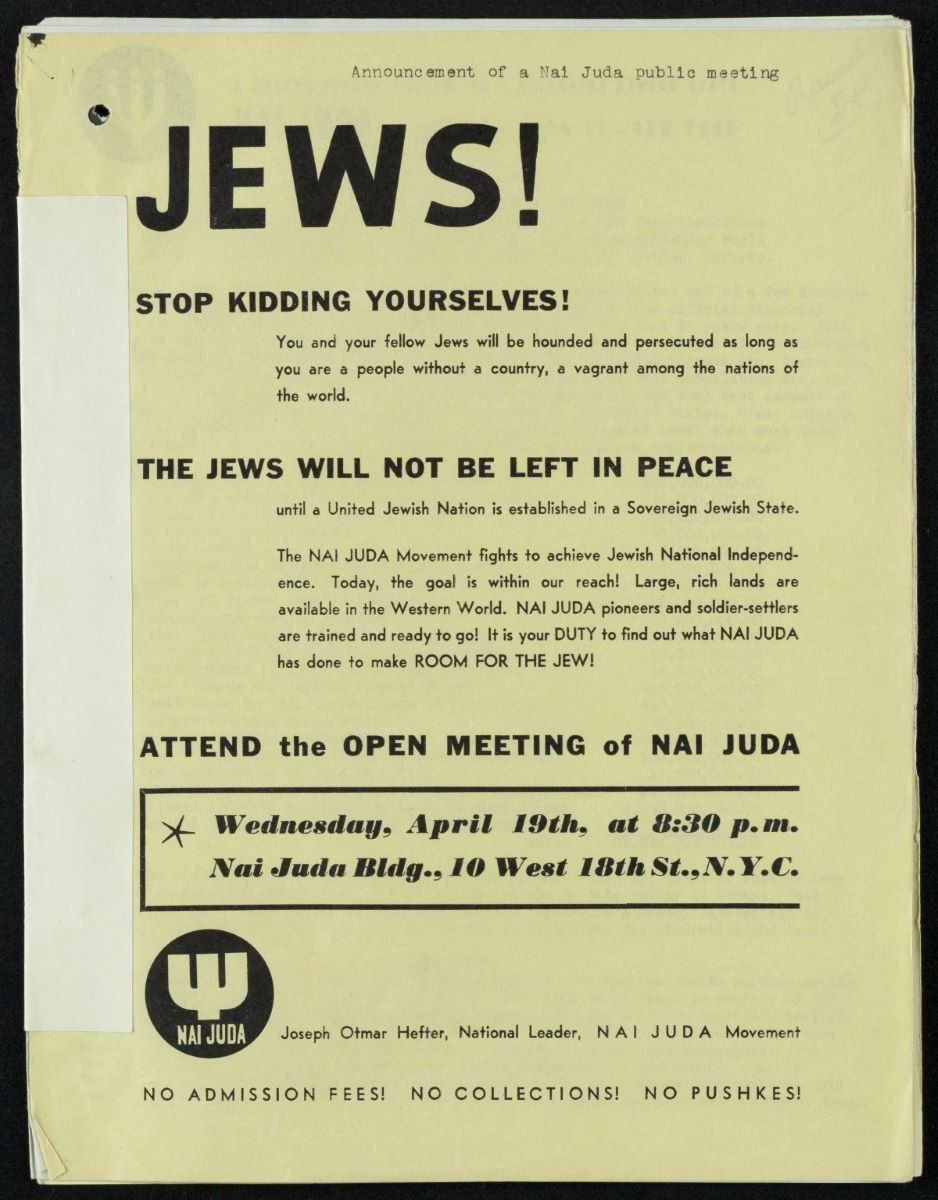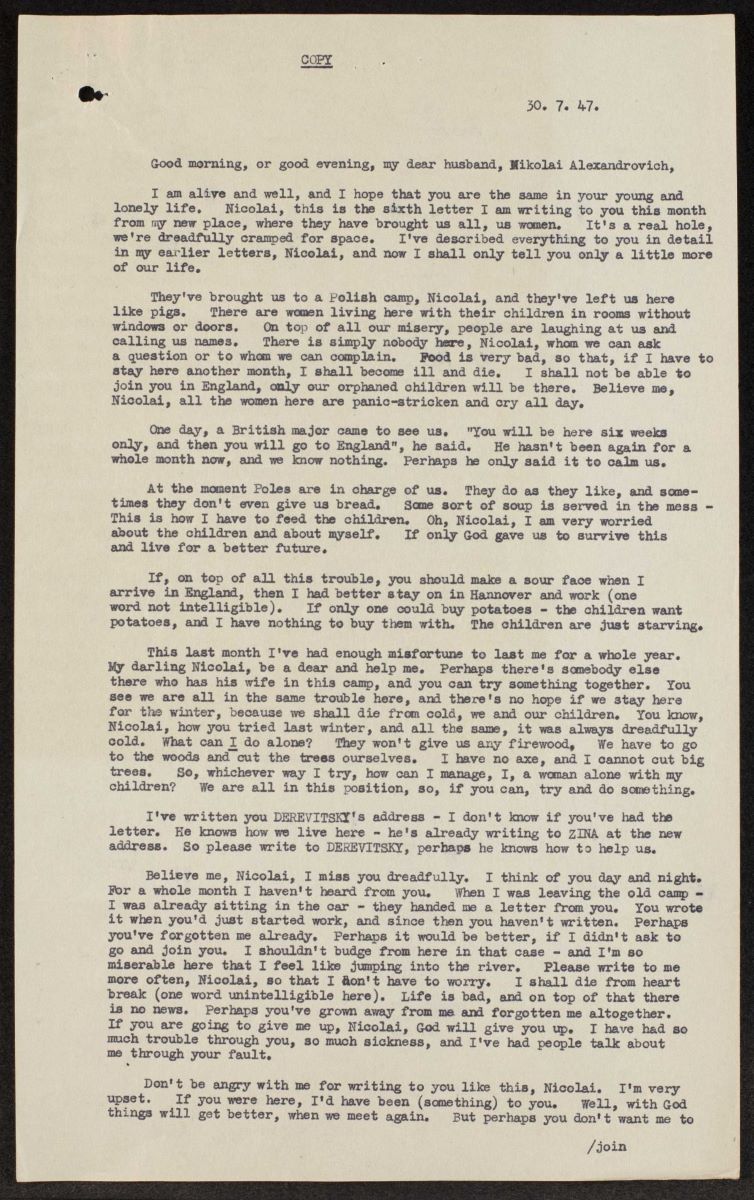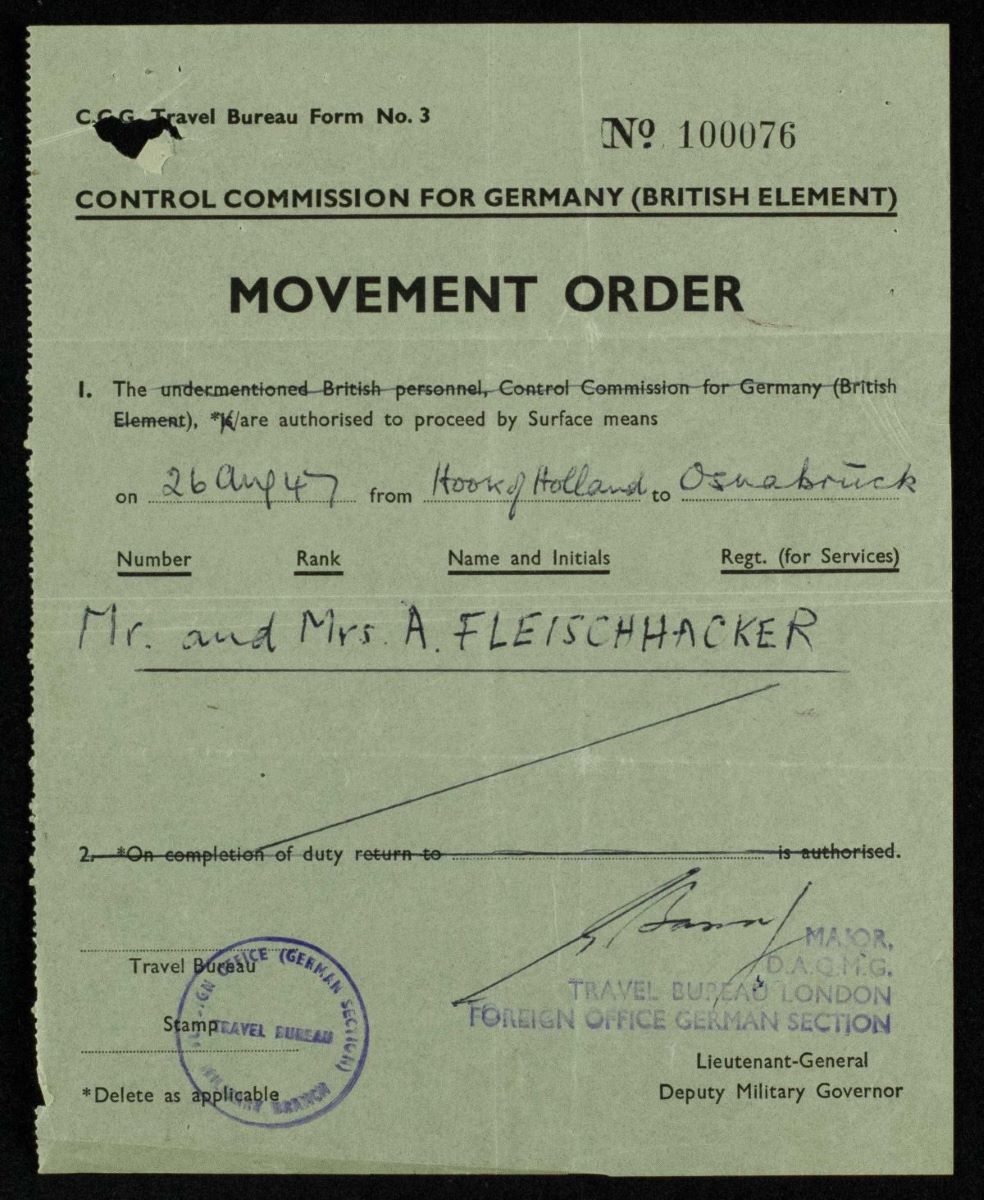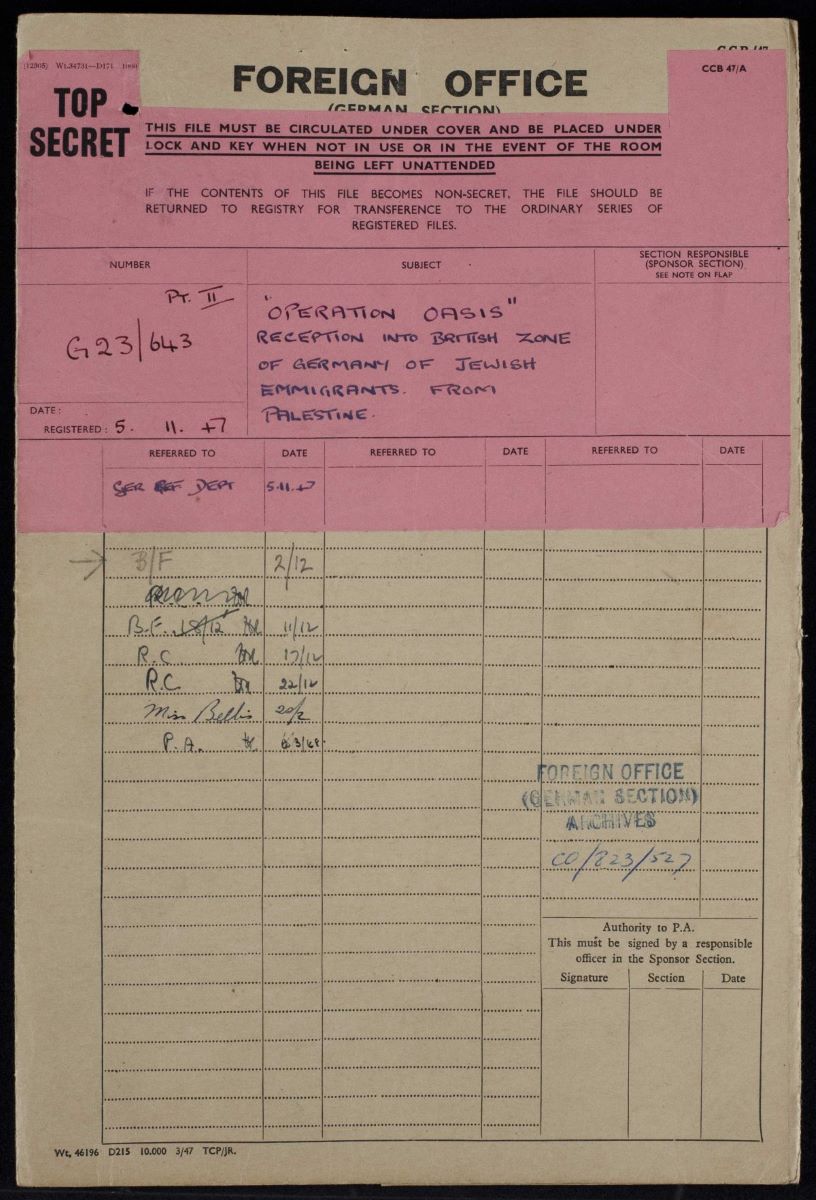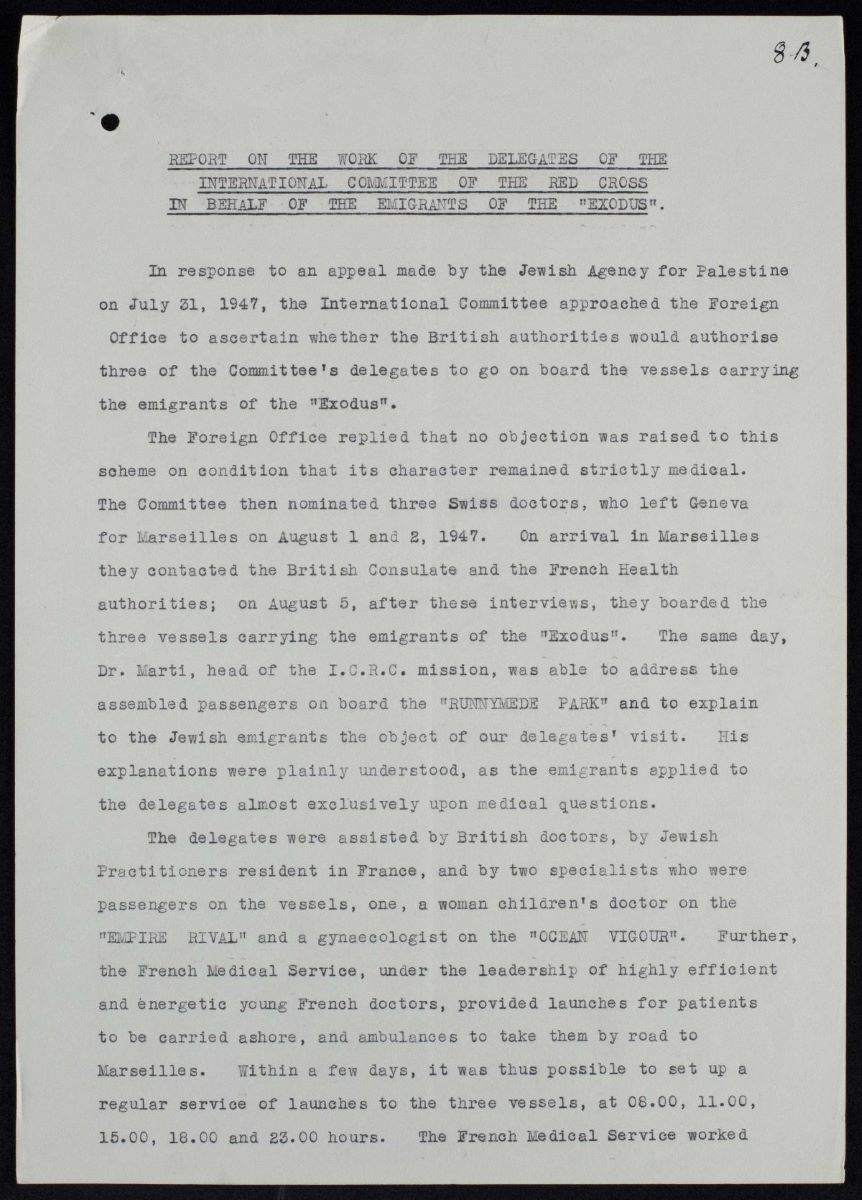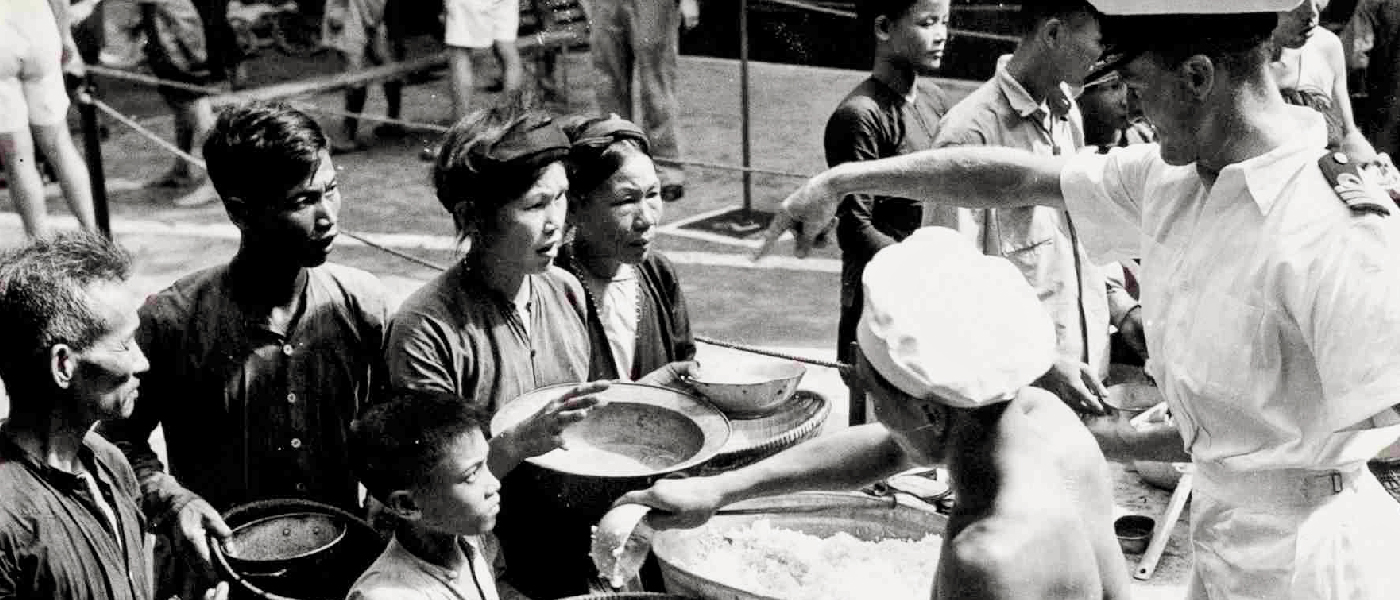THE GLOBAL SCOPE OF THE REFUGEE CRISIS
Refugees, Relief, and Resettlement: Forced Migration and World War II chronicles the plight of refugees and displaced persons across Europe, North Africa, and Asia from 1935 to 1950 through correspondence, reports, studies, organisational and administrative files, and much more. It is the first multi-sourced digital collection to consider the global scope of the refugee crisis leading up to, during, and after World War II.
Gathered together from key sources that include The U.K. National Archives, the British Library, the National Archives Records Administration in the United States, and World Jewish Relief, this archive documents the history of forced migration to uncover the hidden history of those displaced from their homes and the relief, resettlement, and repatriation efforts that followed.
The archive chronicles not only the plight of those made to resettle inside and outside national borders owing to war and ethnic and political persecution, it also addresses the unique factors to give rise to the many kinds of refugees, from evacuees and displaced persons, to population transferees and forced labourers.
Refugees, Relief and Resettlement: Forced Migrations and World War II represents an ambitious first step in a series of titles that will explore the history of refugeeism from the late 19th century through mid- to late 20th century.
Value to Researchers:
Relates to Current Issues: Forced migration represents one of the most pressing issues of our time. From the flight of Rohingya from Myanmar and Syrians from their homeland to longstanding crises in Sudan and Afghanistan, the world refugee crisis has in the last decade reached levels not seen since the end of the Second World War. In the same way, refugee influxes today have transformed government policy in this age of Brexit, Donald Trump, and European nationalism. Refugees, Relief, and Resettlement: Forced Migration and World War II sheds light on how the nearly 60 million displaced people by the war’s end would significantly reshape post-war diplomacy, political life, and society.
Growing Academic Field of Study: The study of forced migration, or refugee studies, is an expanding field as the plight and presence of refugees gain ever more media attention and require a growing number of professionals to address the needs of these populations. Alongside programs dedicated entirely to refugee studies, courses and course sections on refugee issues in a variety of disciplines in the humanities and social sciences is matched only by the rapid growth of peer-reviewed publications on this topic.
Interdisciplinary Nature and Global in Scope: Refugee studies is cross-disciplinary by nature, drawing in scholars of history, economics, psychology, public health, sociology, anthropology, religion, language and literature and nearly all regions within area studies/global studies.
Refugees, Relief, and Resettlement: Forced Migration and World War II will include the following collections which are being digitised for the first time.
• Refugee Records from the General Correspondence Files of the Political Departments of the Foreign Office, Record Group 371, 1938-1950, sourced from The National Archives, Kew
• Refugee Files from the Records of the Foreign Office, 1938-1950, sourced from The National Archives, Kew
• Refugee Records from the War Cabinet, the Colonial Office, the Home Office and the War Office, 1935-1949, sourced from The National Archives, Kew
Documentation from these three collections together address the plight of various ethnicities: Albanian, Arab, Armenian, Assyrian, Austrian, Baltic, Belgian, British, Bulgarian, Chinese, Czech, Ethiopian, French, German, Greek, Hungarian, Italian, Jewish, Latvian, Norwegian, Polish, Romanian, Russian, Spanish, Ukrainian, and Yugoslavian.
Also included are displaced populations fleeing from or being resettled in: Austria, Belgium, Brazil, British Guyana, Central and Eastern Europe, China, Cyprus, Denmark, East, North, and Southwest Africa, Egypt, Ethiopia, France, Germany, Gibraltar, Greece, India, Iran, Iraq, Italy, Jamaica, Mauritius, North Africa, Palestine, Poland, Portugal, Rhodesia, Spain, Sweden, Switzerland, Tanganyika, the Middle East, the United Kingdom, Turkey, and Yugoslavia.
• Refugee Records from the Public and Judicial Department Collections of the British India Office, 1939-1952, sourced from The British Library
As the largest British colony in Asia, India served as stopping point for refugees from Asia and Africa. In particular, these records document the plight of refugees from Thailand, Burma (Myanmar), China and other Japanese-occupied territories.
• Records of the Department of State Relating to the Problems of Relief and Refugees in Europe Arising from World War II and Its Aftermath, 1938-1949, sourced from the National Archives Records Administration (NARA)
This collection addresses the U.S. State Department’s focus on “how to handle relief measures in the throes of political conflict and war” and “how to deal with refugees displaced by persecution and fighting and unable to return to home in the war’s aftermath.”
• Archives of the Central British Fund for World Jewish Relief, 1933-1960, sourced from World Jewish Relief
This collection documents the role of the British Fund for World Jewish Relief in aiding refugees from Nazi oppression and survivors of the Holocaust. In contrast to the government document collections, these records open a window onto the inner workings of a leading NGO in addressing the refugee crisis.

Gale Primary Sources | Gale Review Blog
Archives Explored | Gale Digital Scholar Lab | Sign up for Updates

FEATURED REVIEW
REFUGEES, RELIEF, AND RESETTLEMENT: FORCED MIGRATION AND WORLD WAR II
The archive beautifully details the complex history of forced migration before, during, and after World War II across three continents with a wealth of impressive, comprehensive primary resources. It is laid out clearly, with excellent searchability, high-quality visuals, and in-depth content. The collections support refugee, Jewish, European, Asian, and African studies; global, diplomatic, and military history; and public health, sociology, economics, and political science. It will be indispensable for migration and World War II scholars and students. – Reviewed by Rob Tench, Librarian at Old Dominion University Libraries, Norfolk, VA
- Library Journal, January 2021
Look Inside
Additional Details
subjects covered
- European Studies
- Judaic & Holocaust Studies
- History
- Western Civilization
- Sociology
- Twentieth Century Studies
- WWII
Platform Features & Tools
Term Frequency
It allows researchers to see the frequency of search terms within content sets to identify central themes and assess how people, places, events and ideas interact and develop over time.
Buscador de temas
Esta herramienta agrupa los temas más comunes y revela conexiones ocultas entre los términos de búsqueda, lo que ayuda a dar forma a la investigación integrando contenidos diversos con información relevante.
Búsquedas simultáneas
Busca al mismo tiempo dentro de los productos complementarios de fuentes primarias, incluidos los ebooks, a través de un entorno de búsqueda unificado que posibilita nuevas e innovadoras conexiones de investigación.
Reviews & Testimonials
“The archive beautifully details the complex history of forced migration before, during, and after World War II across three continents with a wealth of impressive, comprehensive primary resources. It is laid out clearly, with excellent searchability, high-quality visuals, and in-depth content. The collections support refugee, Jewish, European, Asian, and African studies; global, diplomatic, and military history; and public health, sociology, economics, and political science. It will be indispensable for migration and World War II scholars and students..”




